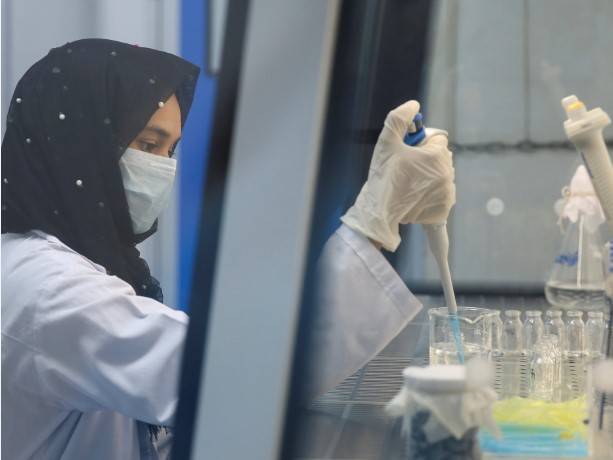Covid cases steady despite detection of Omicron variant in Pakistan
NIH data shows daily number of tests rises to nearly 4,000: Pfizer eyes big drop in Covid-related revenues in 2023

Stay tuned with 24 News HD Android App

The everyday number of Covid-19 infections were steady despite detection of an Omicron variant as Pakistan diagnosed 19 more coronavirus cases with no fatality during the last 24 hours (Tuesday), showed the statistics released by the National Institute of Health (NIH) on Wednesday morning, reported 24NewsHD TV channel.
According to the NIH data, the death toll in the country remained the same at 30,640 whereas the number of total infections now rose to 1,576,312 after adding the fresh 19 cases.
During the last 24 hours (Tuesday), 3,797 tests were conducted throughout Pakistan whereas the positivity ratio stood at 0.50 percent. The number of patients in critical care stood at 11.
COVID-19 Statistics 01 February 2023
— NIH Pakistan (@NIH_Pakistan) February 1, 2023
Total Tests in Last 24 Hours: 3,797
Positive Cases: 19
Positivity %: 0.50%
Deaths: 00
Patients on Critical Care: 11
(shared by NCOC-NIH)
First case of Omicron sub-variant BF.7 emerges
A new case of coronavirus BF.7 variant was reported in Karachi.
The current surge in Covid-19 infections in China is believed to be driven by the BF.7 sub-variant of Omicron. But this isn’t the first time that BF.7 has made news — in October, it started to replace the variants that were then dominant in the United States and several European countries.
Sources said the variant was detected in Karachi after sequencing of the virus. This is the first case of BF.7 variant in Pakistan.
The symptoms seen in individuals infected with this variant are fever, cough, sore throat, runny nose and fatigue.
Generally, these symptoms are that of mild 'flu'. However, occasionally some people do get severe symptoms like breathlessness, coughing, fatigue and low oxygen level.
The BF.7 accounted for more than 5% of US cases and 7.26% of UK cases in October.

Pfizer eyes big drop in Covid-related revenues in 2023
After two straight years of surging sales due to Covid-19 products, Pfizer projected a steep decline in 2023 revenues as demand for vaccines and therapeutics ebbs.
The pharma giant expects about a 30 percent drop in company revenues this year as governments work off excess inventories of Pfizer's coronavirus-related products and consumer demand wanes in some markets.
Sales for the vaccine Comirnaty and the Covid-9 therapeutic Paxlovid will reach a "low point" this year before rebounding somewhat in 2024, the company said.
The hit means Pfizer expects 2023 revenues of between $67-71 billion, down about 30 percent from the 2022 level.
Pfizer's revenues rose by nearly a quarter between 2021 and 2022 after almost doubling in the prior stretch.
Pfizer expects 2024 sales of Covid products to stabilize, said Chief Executive Albert Bourla.
"Then starting in 2025 and continuing in 2026 and beyond, we expect to see an increase in Covid-19 vaccination rates, assuming the successful development and approval of a Covid-flu combination product," Bourla said in prepared remarks.
Pfizer projected that 24 percent of the US population would receive a Covid-19 vaccine in 2023, down from the 31 percent level in 2022.
But Bourla said the combined Covid/flu vaccine could bring the level in line with the current flu shot benchmark of about 50 percent of all Americans.
Pfizer expects increased uptick for its Covid therapeutic in China. The company has agreements in China with one company to import and distribute Paxlovid and with another Chinese enterprise to manufacture the drug locally.
"Pfizer shipped only tens of thousands of courses to China in fiscal 2022," Bourla said. "From December through March we expect to ship millions of courses to meet local demand."
In terms of overall fourth-quarter earnings, Pfizer reported profits of $5.0 billion, up 47 percent from the year-ago period.
Revenues rose two percent to $24.3 billion.
Pfizer said it is also hard at work on non-Covid output, planning 19 new products over an 18-month period.
Shares of Pfizer declined 0.3 percent to $43.44 in early Tuesday trade.
With inputs from AFP.
